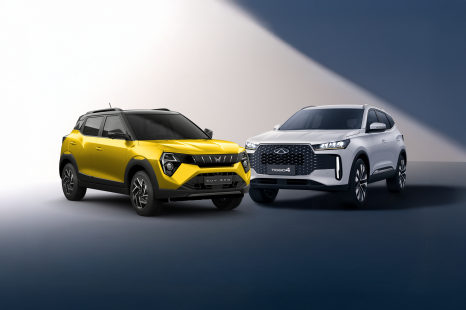

Andrew Maclean
2025 Mahindra XUV 3X0 vs Chery Tiggo 4: Spec battle
29 Days Ago
Hyundai has aimed to address one of the few gripes we had with its electric Ioniq 5 – the ride. Was it successful?
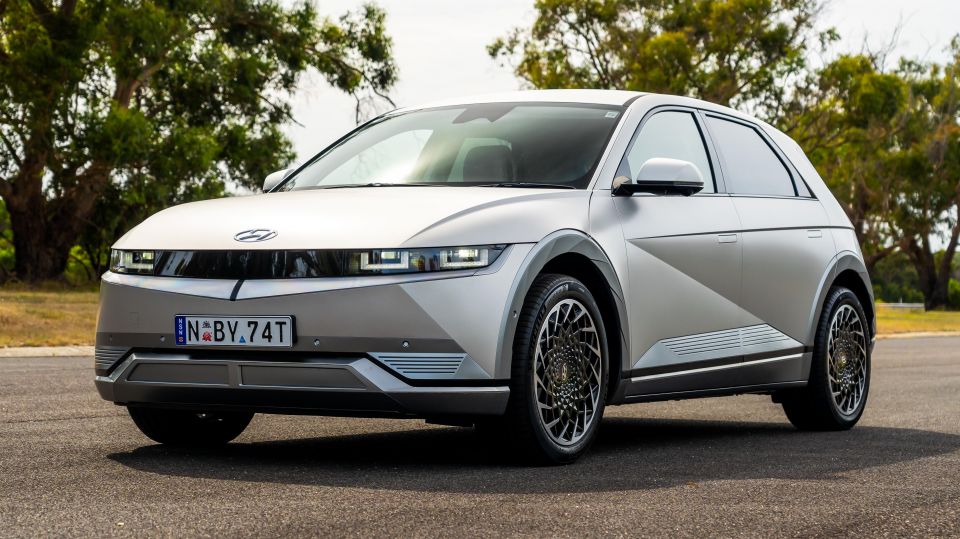
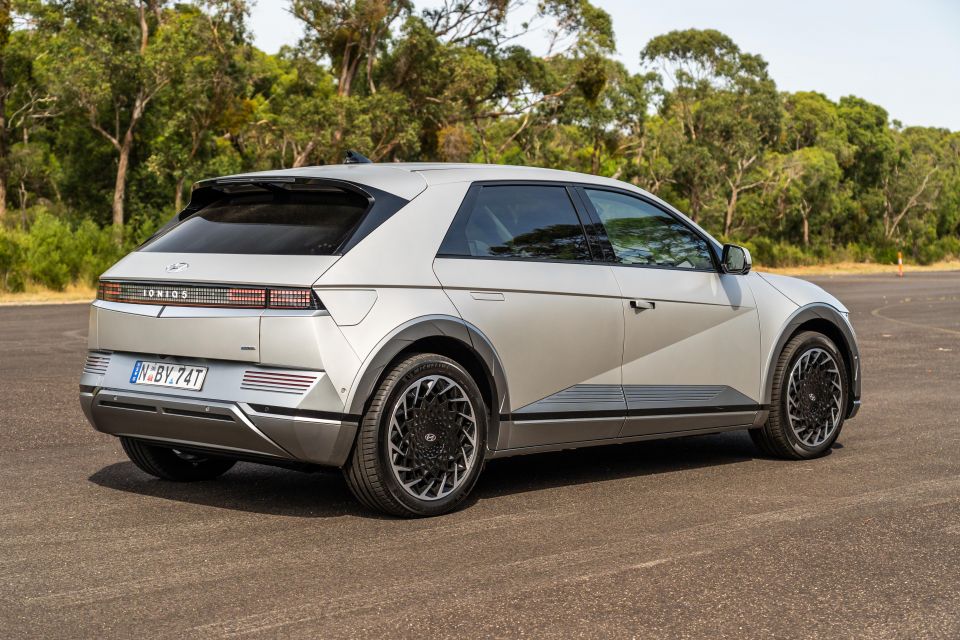

Quickly see how this car stacks up against its competition. Select any benchmark to see more details.
Where expert car reviews meet expert car buying – CarExpert gives you trusted advice, personalised service and real savings on your next new car.
Tesla’s strong sales performance has shown electric vehicles have well and truly gone from being mere curiosities to mainstream vehicles.

It’s not surprising Tesla has come to dominate the local EV market, and yet the brand is facing tough competition from Asian and European rivals alike.
Hyundai is one such rival, with the Ioniq 5 serving as a rival of sorts to the Tesla Model Y and the sleeker Ioniq 6 more of a Model 3 competitor.
Both are seriously impressive vehicles, and yet the Ioniq 5 was outsold more than 10-to-1 by the Model Y last year. Blame supply.
While Tesla is bringing in enough vehicles to satisfy demand, Hyundai – like so many other brands – is well behind in this respect. The brand sold 756 examples here last year, enough to see it outsell combustion-powered fare like the Range Rover Evoque but nowhere near enough to take down the Tesla.
For 2023, Hyundai has addressed one key complaint we’ve had of the vehicle previously – the ride.
Hyundai says the 2023 model features a new ride and handling package, with engineers’ key focuses being wheel control, bump absorption and body control.
Its Kia EV6 platform-mate has always outshone it dynamically, by virtue of its superior local ride and handling tune. It’s hard not to compare these two, so has Hyundai closed the dynamic gap against its sister brand?
And, should you try and get your hands on one of the limited number of Ioniq 5s that are coming into Australia (in batches), or take the path of least resistance and just get a Model Y like seemingly everybody else?
Last year’s unnamed RWD and AWD models, which offered the same level of equipment, have been replaced with a ladder of new variants.
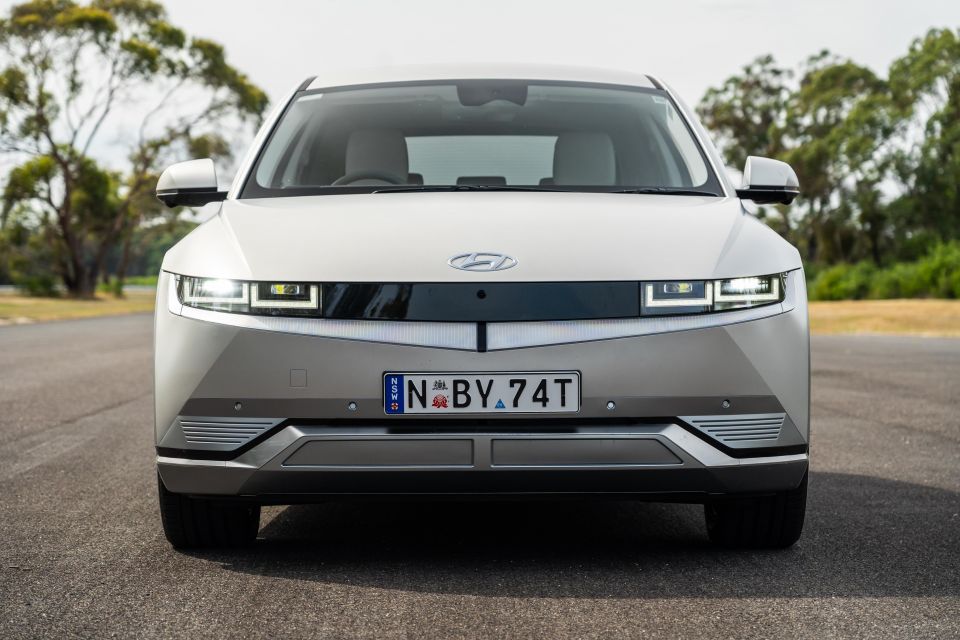
First announced in 2022, the Ioniq 5 line-up now comprises the single-motor rear-wheel drive Dynamiq, the mid-range dual-motor all-wheel drive Techniq featured here, and the flagship Epiq AWD.
The Dynamiq is priced from $72,000 before on-road costs, with the Techniq retailing for $79,500 before on-roads and the Epiq wearing an $85,000 sticker. Matte paint, like our car’s stunning Gravity Gold, is an extra $1000.
The Tesla Model Y is priced from $69,300 in base RWD guise and $95,300 for the AWD Performance, while the Kia EV6 ranges from $72,590 for the base Air RWD to $99,590 for the GT AWD performance hero.
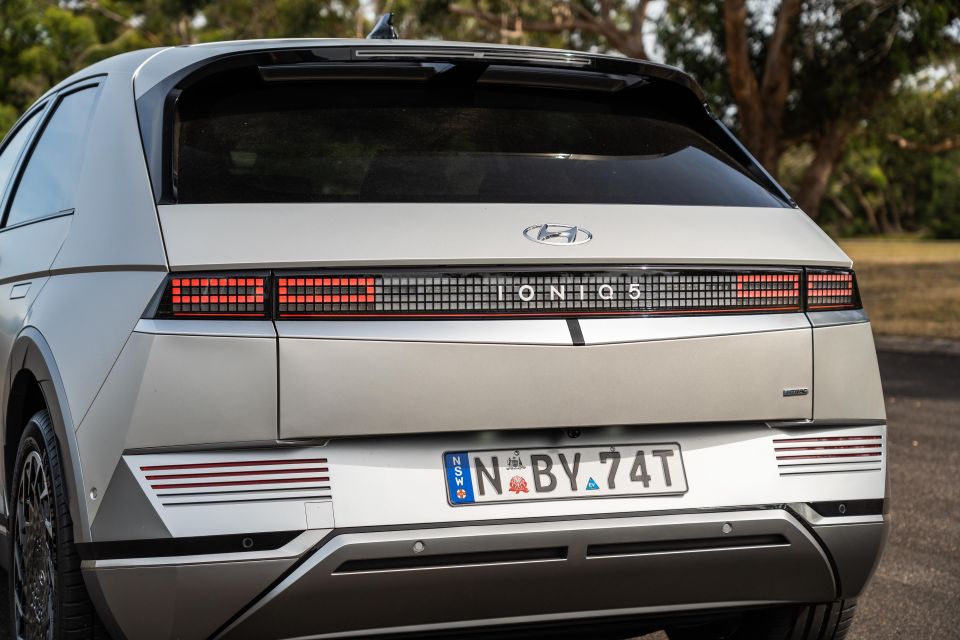
The most direct EV6 comparison is with the GT-Line AWD, priced from $87,590 before on-roads.
There’s a glut of new EVs at this end of the market and, while many are smaller than the Ioniq 5, many offer simple performance, range and pricing.
These include the all-wheel drive BMW iX1 xDrive30 ($82,900) and Volvo XC40 Recharge Twin Pure Electric ($79,490). All prices listed exclude on-road costs.
For my money, the Ioniq 5 has a better interior than the EV6.
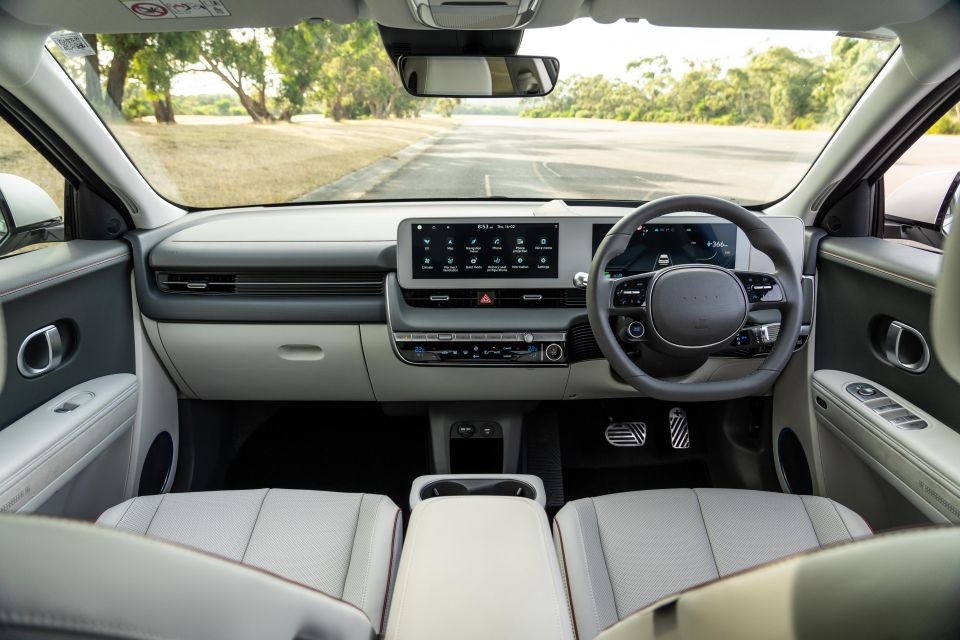
There’s greater use of soft-touch plastic than the Kia, with squidgy materials used across much of the dash as well as the door tops. The Kia, in contrast, makes greater use of hard if attractive plastic.
While Kia has tried to make its EV’s interior as sporty and combustion-car-like as possible, Hyundai has taken advantage of the battery placement to give the Ioniq 5 an almost entirely flat floor with a centre console detached from the dashboard.
That means you can clamber from the driver’s seat out the passenger’s side door, handy if someone parks too close to you at a charging station. It’s like the old days of bench seats, except without a big driveline hump or a centre seat.
The aforementioned centre console can also be slid back and forward to free up more space in the rear. It’s not the only clever detail, with the glove compartment also a highlight – it’s a drawer!
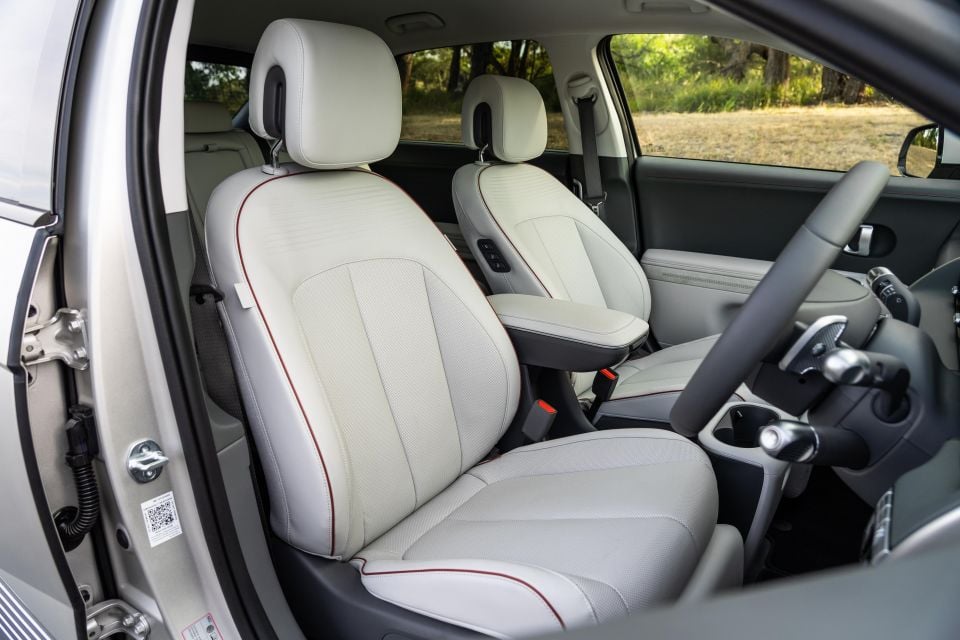
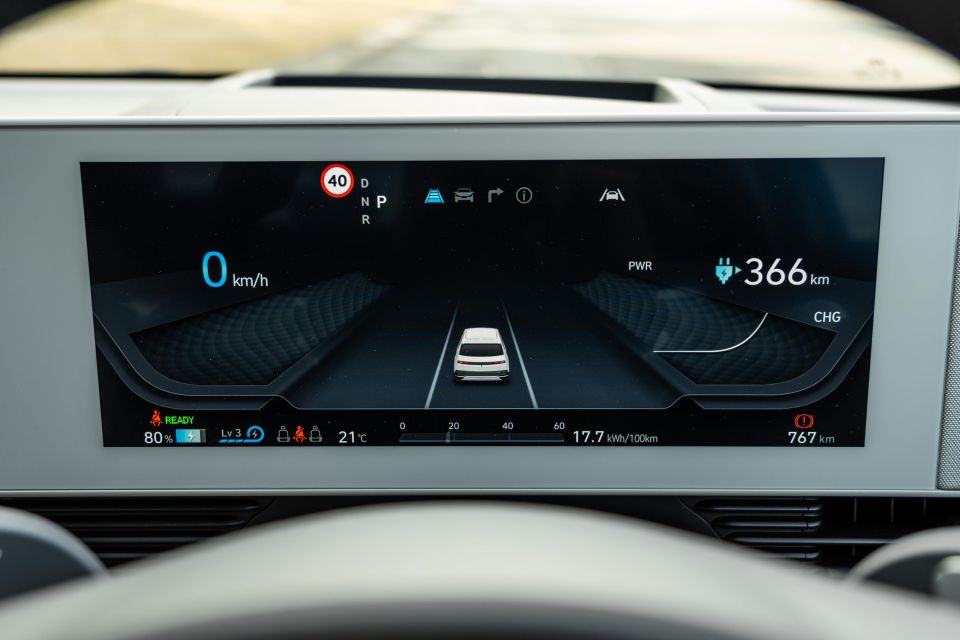
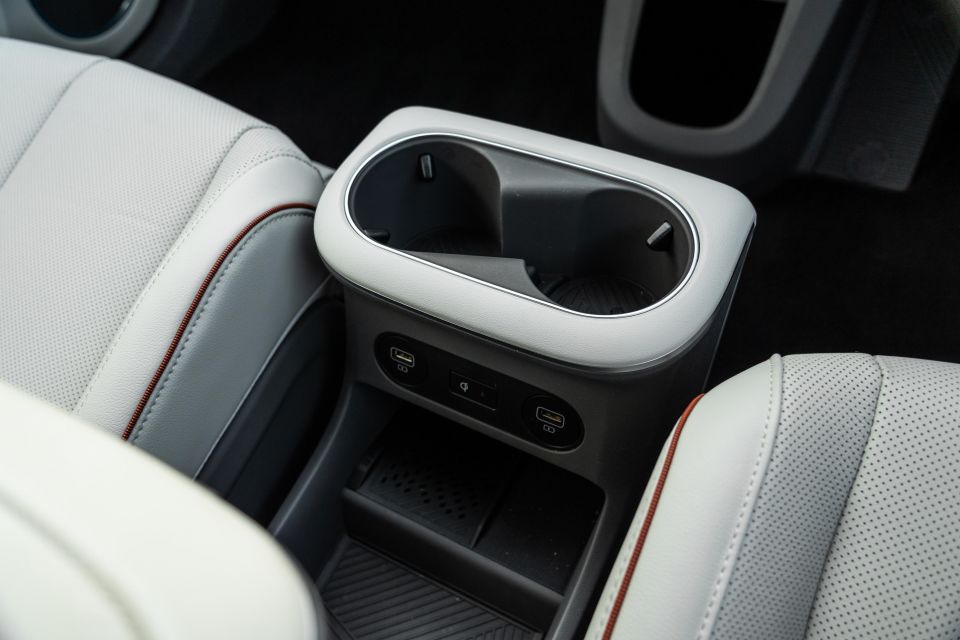
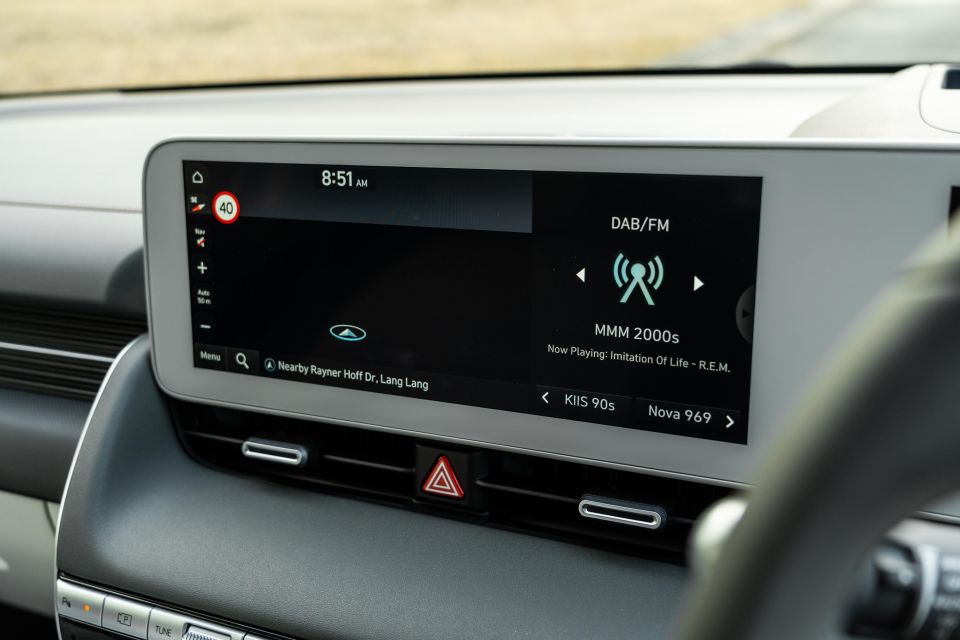
Two USB-A outlets are situated on the centre console, with a third – for use for smartphone mirroring – found at the base of the centre stack.
The off-white upholstery has attractive red piping, though as modern and premium as this makes the interior look, we fear it won’t wear well.
The overall look of the interior is clean and modern, including the ambient lighting which glows from behind the armrests. The illuminated rings around the speaker grilles are a bit gauche, however.
The seats themselves are superb, particularly those up front. They’re heated and ventilated, though there’s no physical switch for this – instead, the controls are buried in a touchscreen menu, which goes against type for Hyundai.
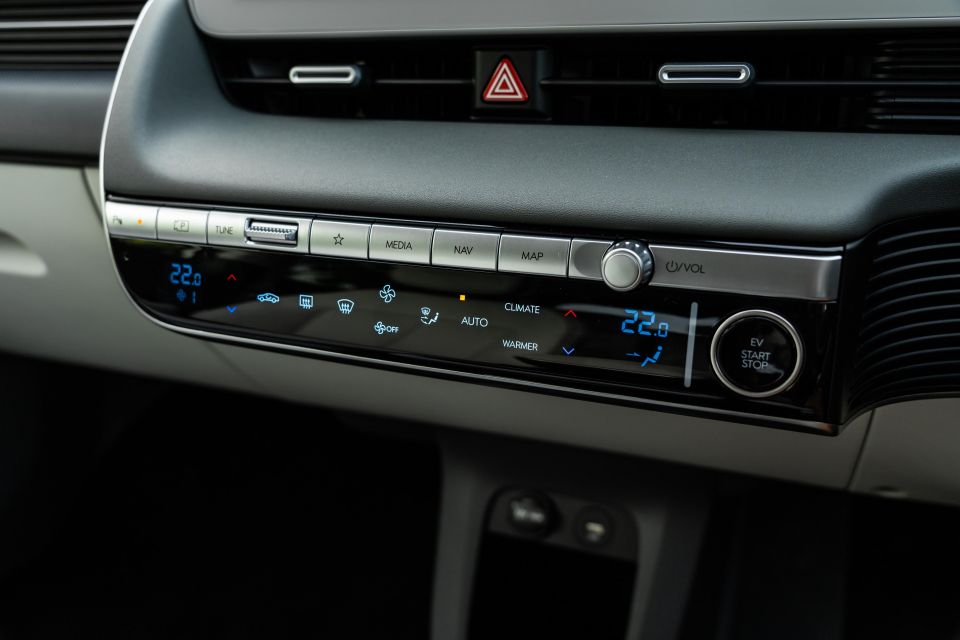
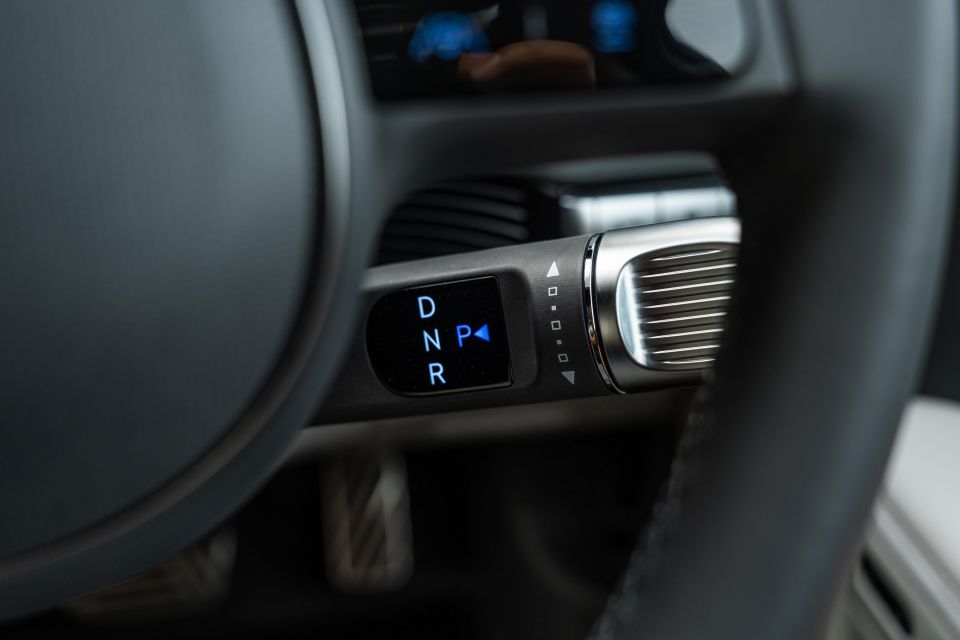
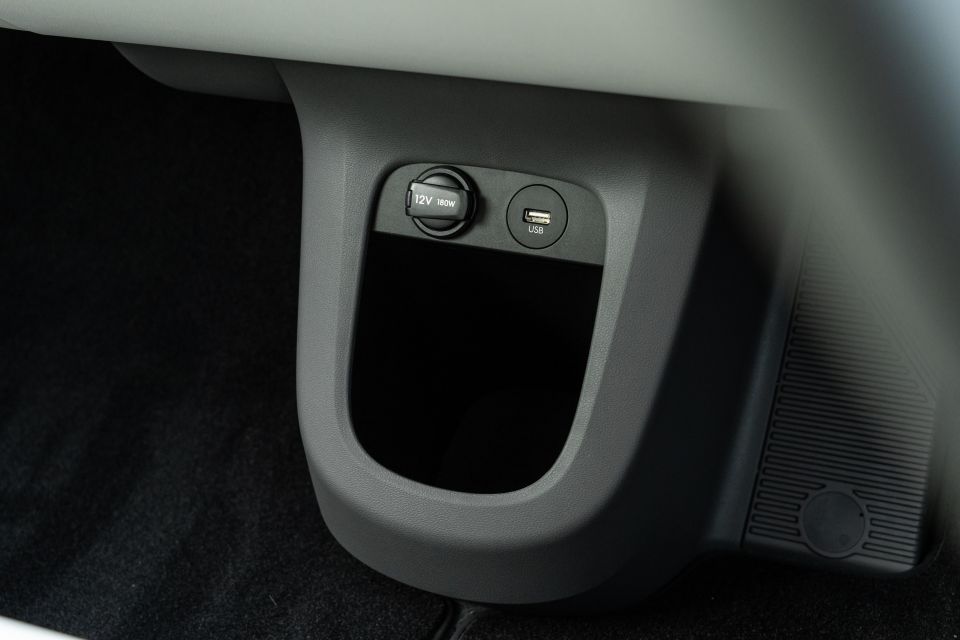
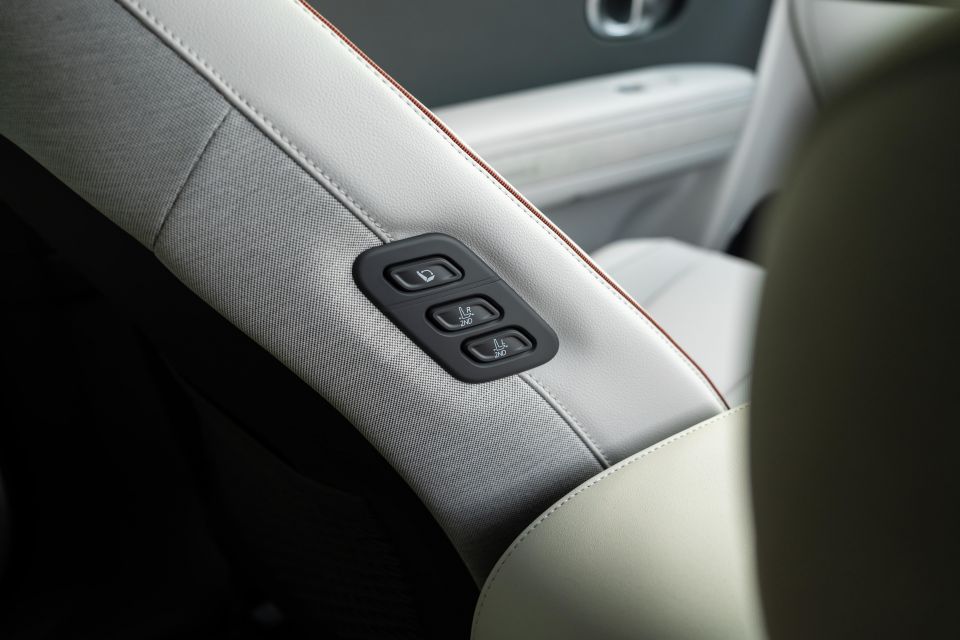
The front seats are power-adjustable and can be reclined almost completely flat. There’s also an additional, adjustable section that serves as a rest for your calves, handy for when you want to relax while you’re waiting at a charger.
And trust me when I tell you, these seats are ideal for napping. Even just having that calf rest slightly retracted while you’re driving makes for a supremely comfortable drive.
The 60/40 heated rear seats are power-adjustable, too, with controls on the side of the front passenger seat that allows you to move each section forward and backwards if you want to maximise cargo space.
But don’t think the Ioniq 5 is a paragon of space efficiency. The rakish roofline does eat into rear headroom, even though the comfortable rear bench is positioned fairly low. Passengers over 180cm may find their hair brushing up against the roof.
In this respect, Hyundai’s designers appear to have prioritised exterior form over interior function, though legroom is ample and there’s a flat floor.
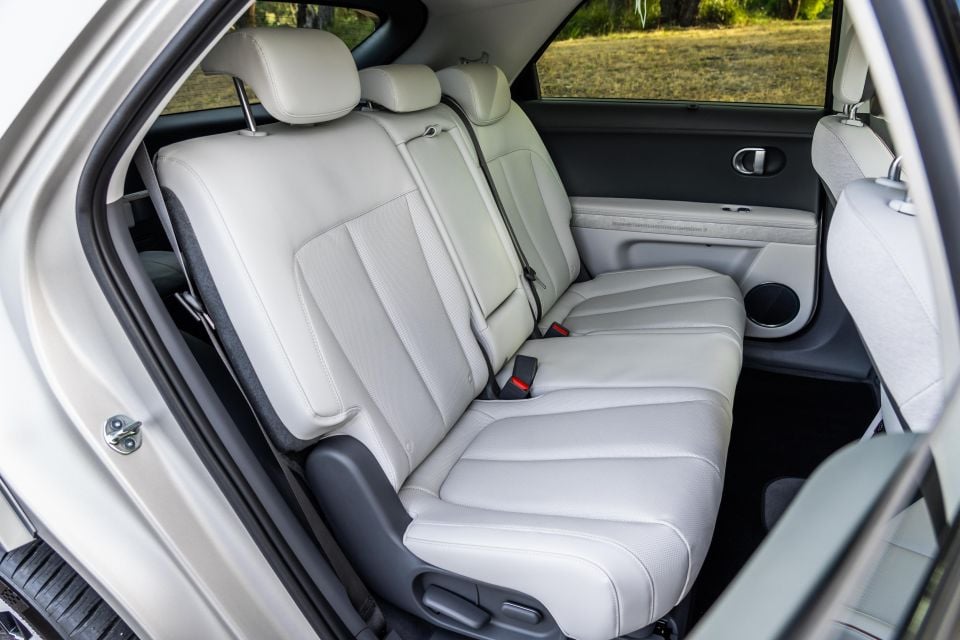
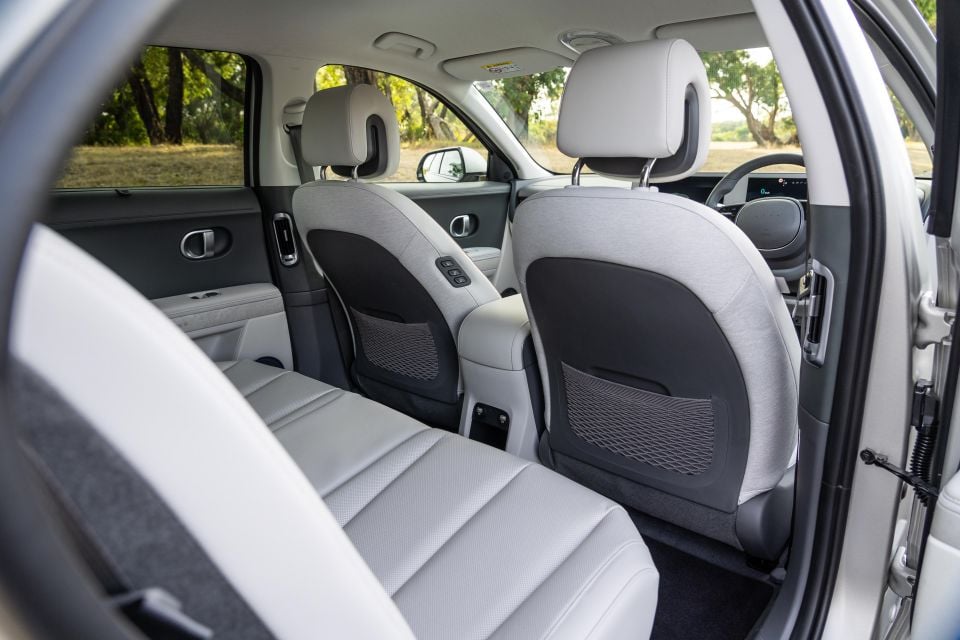
There are B-pillar-mounted air vents, as well as two USB-A outlets and map pockets on the front seatbacks. Like on the front doors, there are also bottle holders in the rear doors that can fit 1L bottles. You’ll find three ISOFIX and two top-tether anchor points for child seats in the rear.
The soft-touch door trim carries to the rear, and the cabin features quite a nice, thick headliner. We miss the glass roof that used to be standard across the range, though, and which you now have to fork out for the flagship Epiq to get.
For something positioned as a quasi-SUV of sorts, the Ioniq 5 doesn’t have the most spacious boot as the sleek tailgate prohibits you from carrying anything too large and bulky. It did fare well on a Costco run, however.
With the rear seats upright the Ioniq 5 has a rear boot capacity of 527L, while there’s also a 25L storage space under the bonnet of AWD models – 2WD versions get twice the capacity under there.
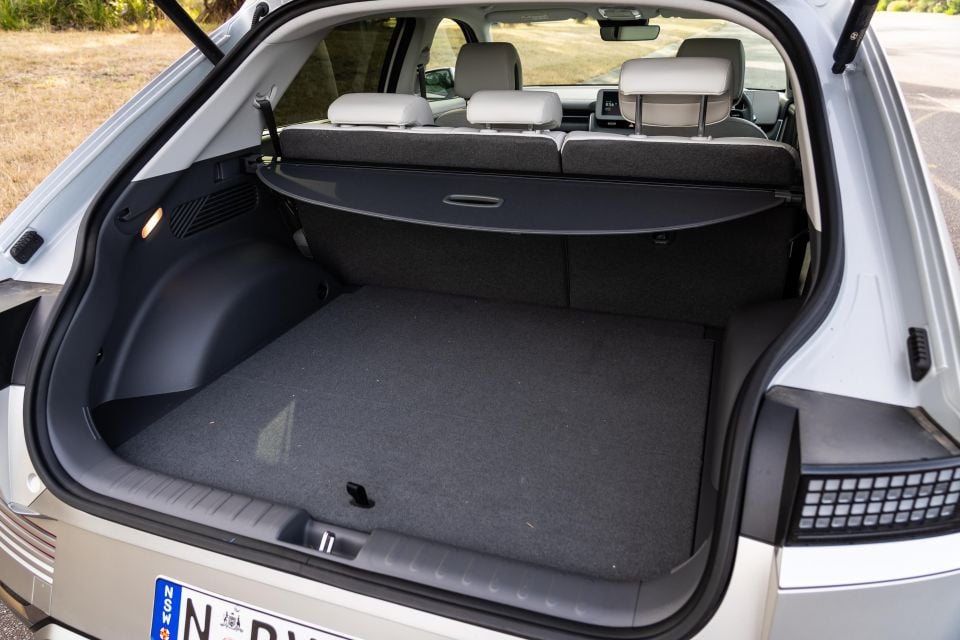
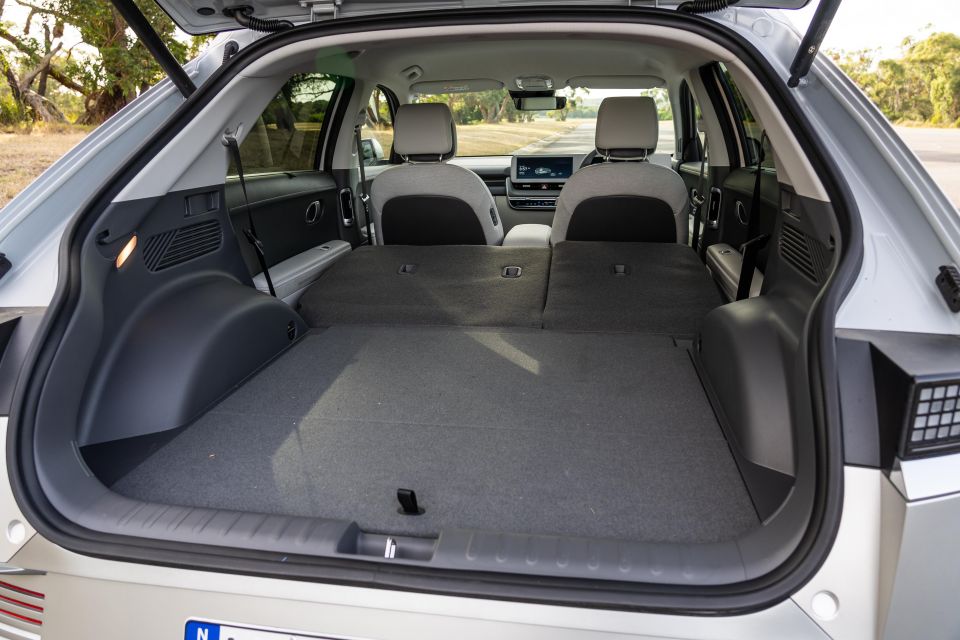
The augmented reality (AR) head-up display will show directional arrows when using the factory navigation, or when you cross a lane marking. It’s not quite as slick as that in the Audi Q4 e-tron, but then its European rival still isn’t offered in Australia so the Hyundai wins by default.
The 12.3-inch digital instrument cluster is attractive, and has different themes based on drive modes. But it’s really just a fresh skin for Hyundai’s familiar digital cluster, and there’s no extra functionality like a map view as you’ll find in, for example, Volkswagen Group products.
The 12.3-inch touchscreen infotainment system boasts attractive graphics, quick response times and intuitive menus, bolstered with a row of physical shortcut buttons. One of these is labelled with a star and, as in other Hyundai products, you can program this to take you to a specific menu – in the absence of a specific ‘home’ button, I set it to take me to the home screen.
With the latest Android Auto update, it now takes up the full screen. But it, along with Apple CarPlay, remains wired in the Hyundai. There’s also no voice prompt capability outside of Android Auto or Apple CarPlay.
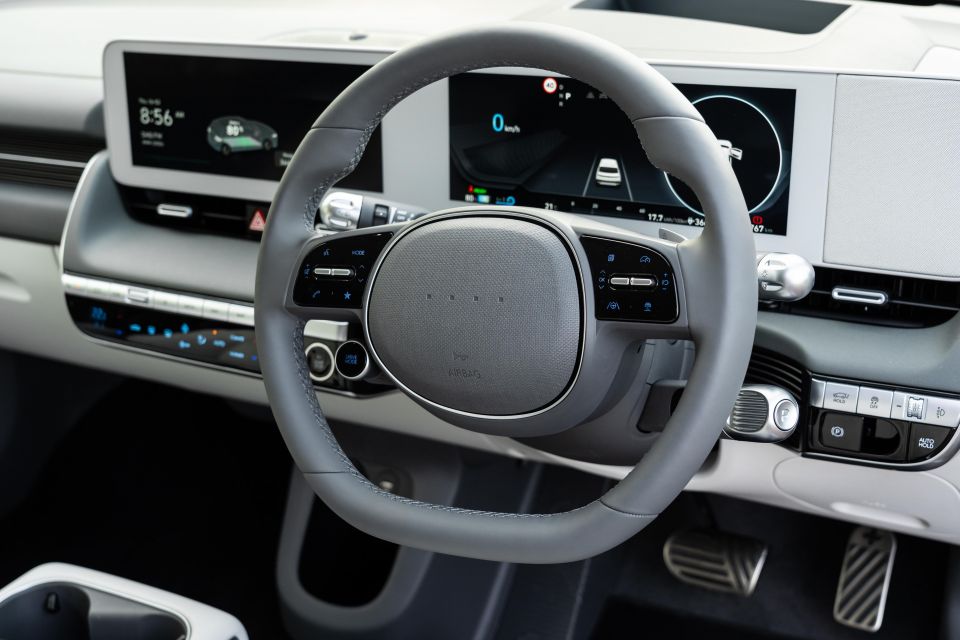
Disappointingly, the Ioniq 5 has yet to receive Hyundai’s Bluelink telematics system, which leaves the vehicle without any app connectivity. The EV6 is in the same boat, with Kia Connect yet to be rolled out locally.
That makes them both look a little out-of-date compared to the Model Y, while the presence of only USB-A outlets in the Hyundai is also rather surprising for an otherwise thoroughly modern EV in 2023.
There’s approach unlocking with the Ioniq 5, so there’s no need to press a button on the exterior door handle.
The Ioniq 5 Techniq and Epiq have a dual-motor all-wheel drive powertrain with total system outputs of 239kW and 605Nm, up on the 168kW/350Nm outputs of the base Dynamiq RWD. The 0-100km/h time is a claimed 5.1 seconds.
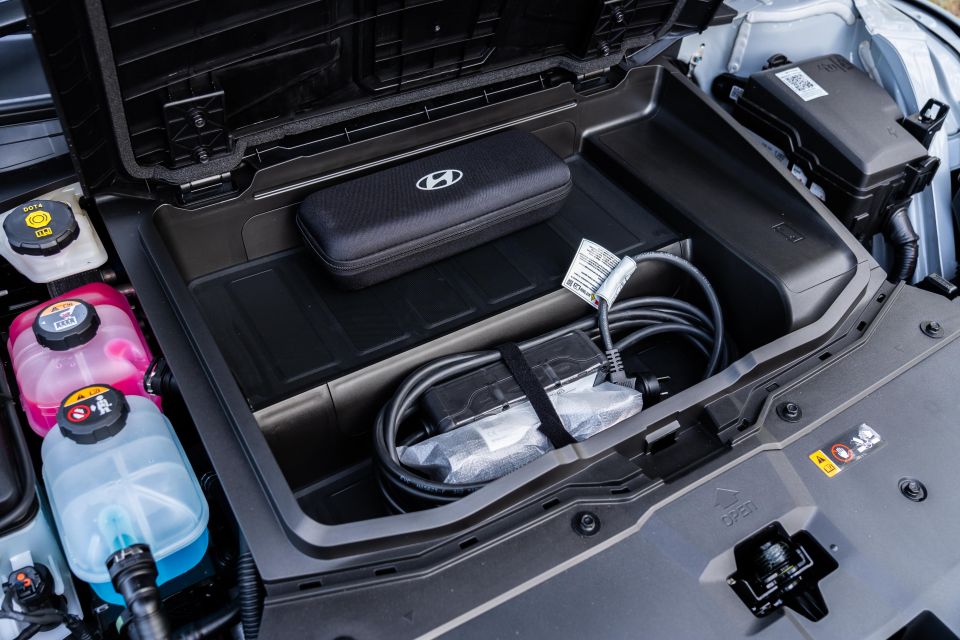
All Ioniq 5 models use a 77.4kWh lithium-ion polymer battery pack that’s mounted beneath the flat floorpan.
Claimed range under the stricter WLTP test cycle is 454km, a drop from the Dynamiq’s 507km figure. That figure is just 1km shy of the rear-wheel drive Model Y, if 30km down on the slinkier Kia EV6 GT-Line AWD.
Thanks to its 800V electrical system, it can be “refilled” using a 350kW ultra-fast DC charger. Using one of these will see the Ioniq 5 take just 18 minutes to charge from 10 to 80 per cent, while it will take 73 minutes with a 50kW fast charger.
A Model Y can only be charged at up to 250kW, but these ultra-fast chargers are hardly on every street corner right now… A 10 to 100 per cent charge in the Ioniq 5 using a 7kW AC charger will take 11 hours and 45 minutes.
Over a loop comprising inner-city, suburban and highway driving, we saw energy consumption of 15.8kWh/100km. On highway commutes from Melbourne’s western suburbs into the CBD we saw consumption of around 16-17kWh/100km, while more urban-biased commuting saw it hover around 14kWh/100km.
To this point in the review, it’s clear the Ioniq 5 and EV6 have been equally compelling, with you as the buyer therefore making a decision based on your personal preference for styling.
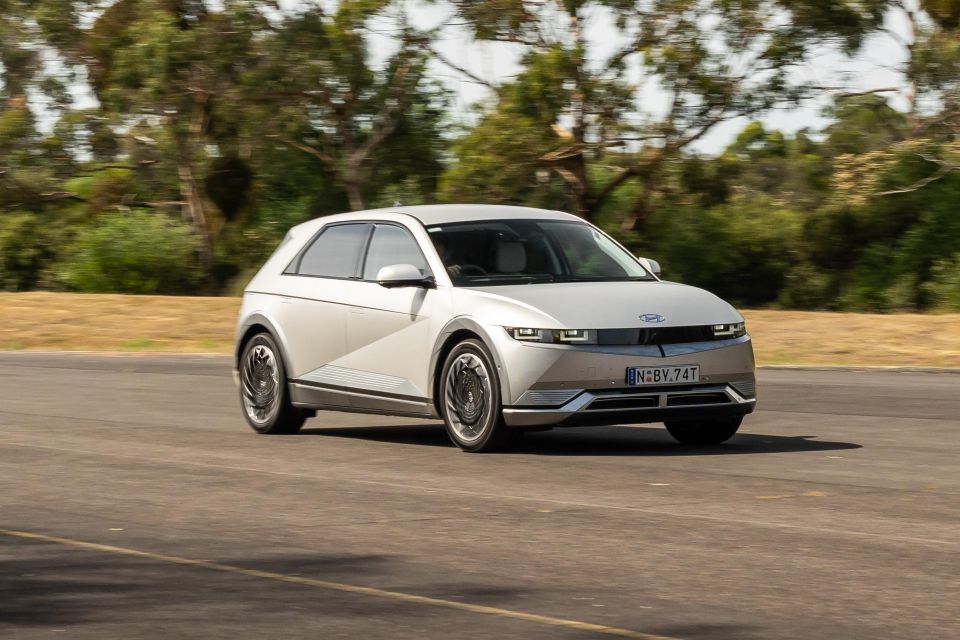
On the road, however, the Kia pulls ahead as it’s the better driver.
The Ioniq 5 isn’t lacking for grunt, and it naturally has the smooth, effortless power delivery expected of an electric vehicle, while the cabin is also serene.
Even in Eco mode, it feels like it has more than enough thrust for most situations; while such drive modes can often feel stifling, we ended up leaving the Ioniq 5 in this for most of our time with it.
The one-pedal driving mode, called i-Pedal, works well at bringing the car to a halt and, while it doesn’t default to on, the car will remember your regenerative braking setting and therefore if you have this on the maximum setting you only need to pull the paddle once when you start the car.
Handling is competent with a generally balanced feel and well-contained body roll. Likewise, the steering strikes a good balance in terms of weighting.
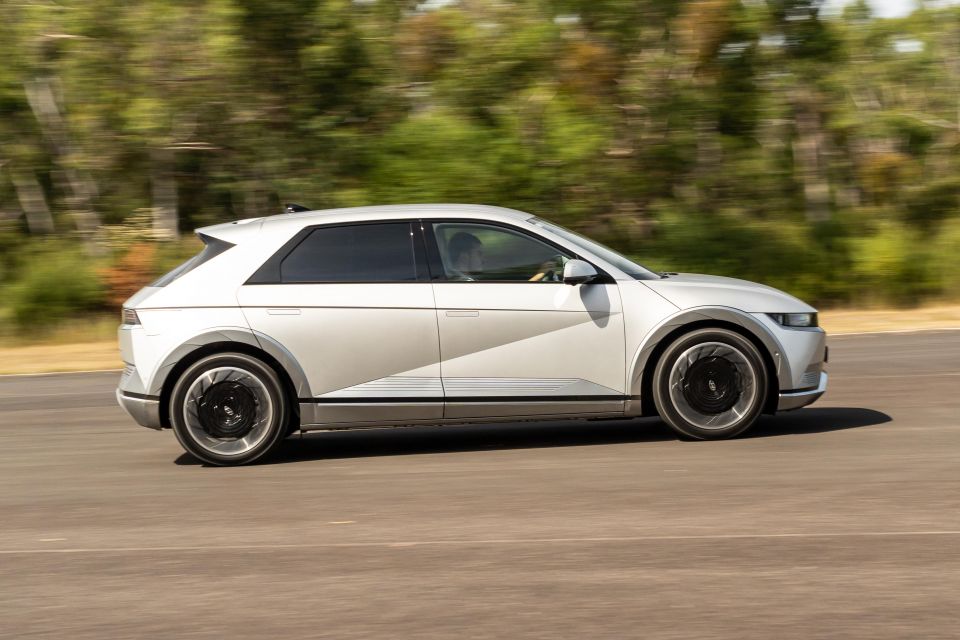
The ride isn’t perfect, however. Despite the update for 2023, the Hyundai still feels much less resolved than its Kia platform-mate.
Over most surfaces, you won’t notice any deficiencies with the Ioniq 5. However, should you come across an undulating road, you’ll notice the Hyundai feels unsettled. There’s a bit too much rebound, the Ioniq 5 taking a bit longer to settle than we’d like.
It feels soft and somewhat floaty, though the upside is the ride is smooth – certainly more so than a Tesla Model Y, in our experience. For my money, I’d rather have something that feels soft and floaty only some of the time, rather than something that feels overly harsh most of the time, but your mileage may vary.
It does make you wonder, though, why Hyundai’s engineers didn’t just pick up the phone to the cohort at Kia. There’s a clear solution here.
The shifter is frustrating. It looks good, it feels solid, and we’re sure you’d eventually get used to it like you would walking with your shoelaces tied together. But it just doesn’t seem intuitive to use – you twist upwards for drive, and down for reverse, but on at least one occasion I found myself twisting the wrong way. You can’t make that mistake with a conventional shifter or even most rotary dials.
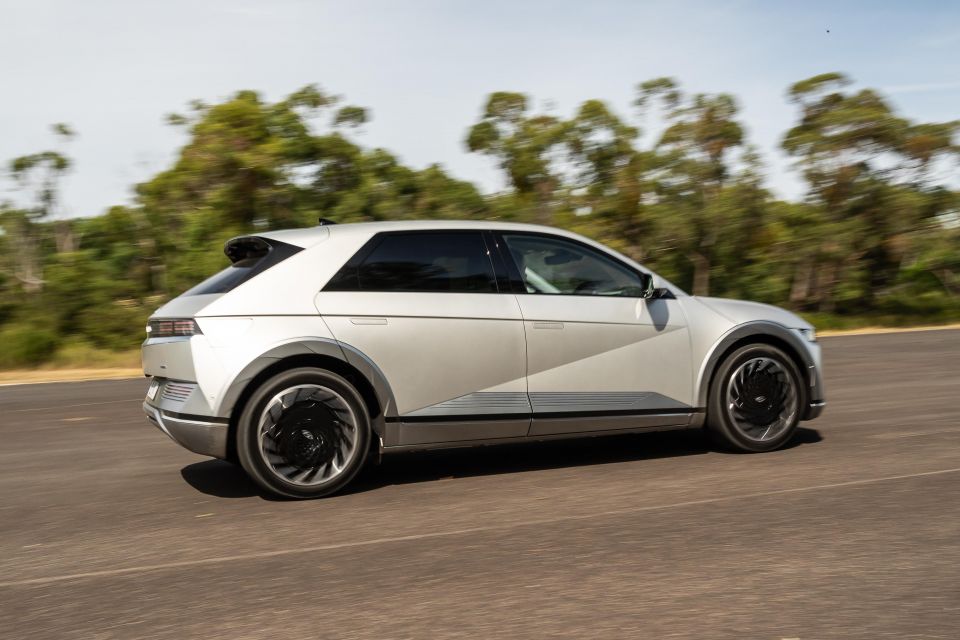
Where expert car reviews meet expert car buying – CarExpert gives you trusted advice, personalised service and real savings on your next new car.
We do like, however, that the drive mode selector is on the steering wheel rather than buried in a touchscreen menu.
The headlights may have dot-matrix design elements but they don’t have Matrix LED functionality. There’s automatic high-beam, which dips the lights if it detects an oncoming vehicle, but none of the trick adaptive technology that has become increasingly common at this price point.
Hyundai’s Lane Following Assist, in conjunction with adaptive cruise control, makes highway driving a breeze. You’re nicely centred in your lane, though the system feels quite assertive.
Even the lane-keep assist system makes its presence felt, so if you’re not a fan of this driver assist technology you’ll want to long-press the steering wheel button to turn all this off.
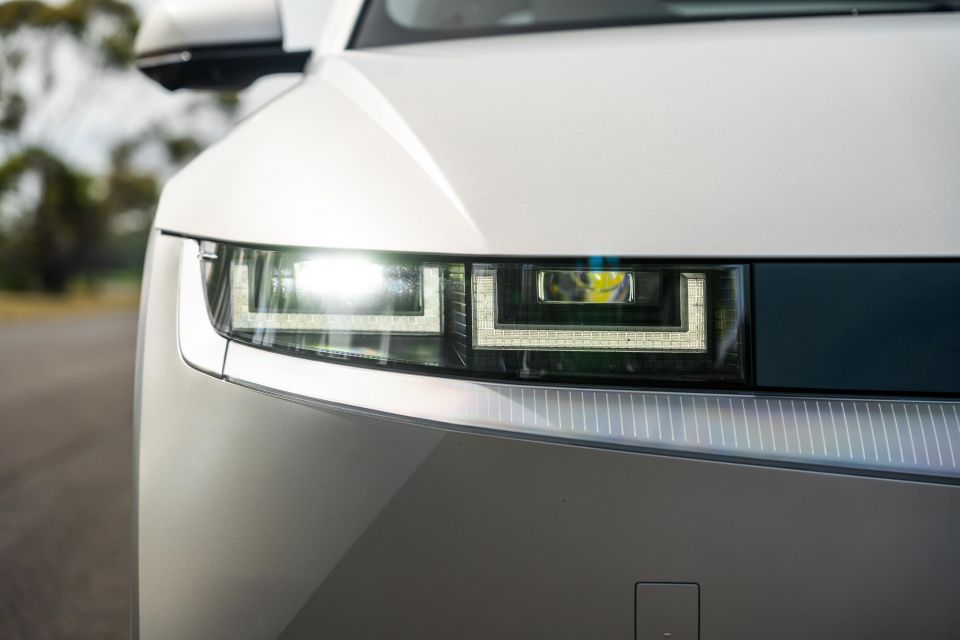

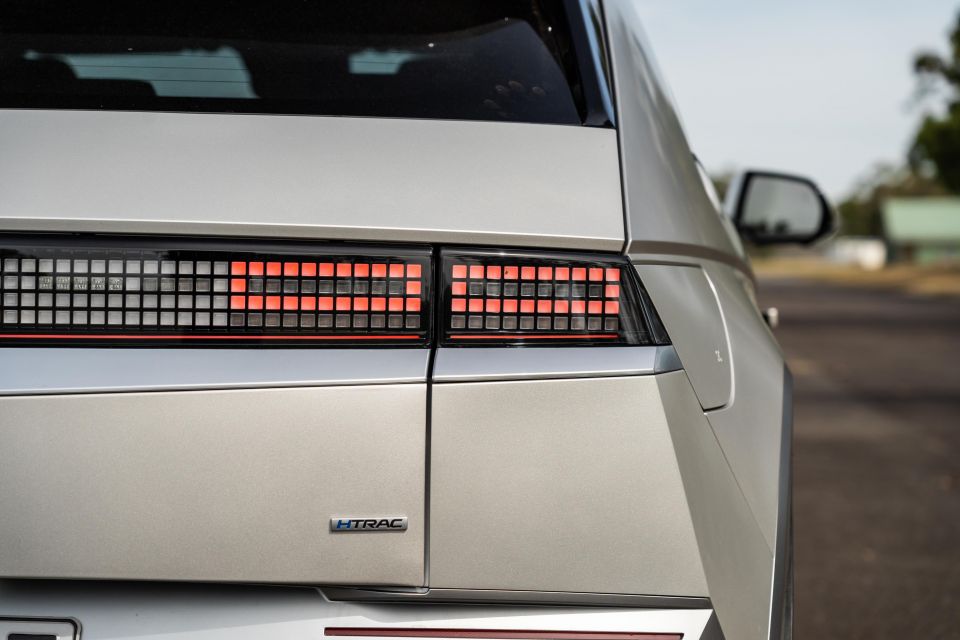

Ioniq 5 Dynamiq highlights:
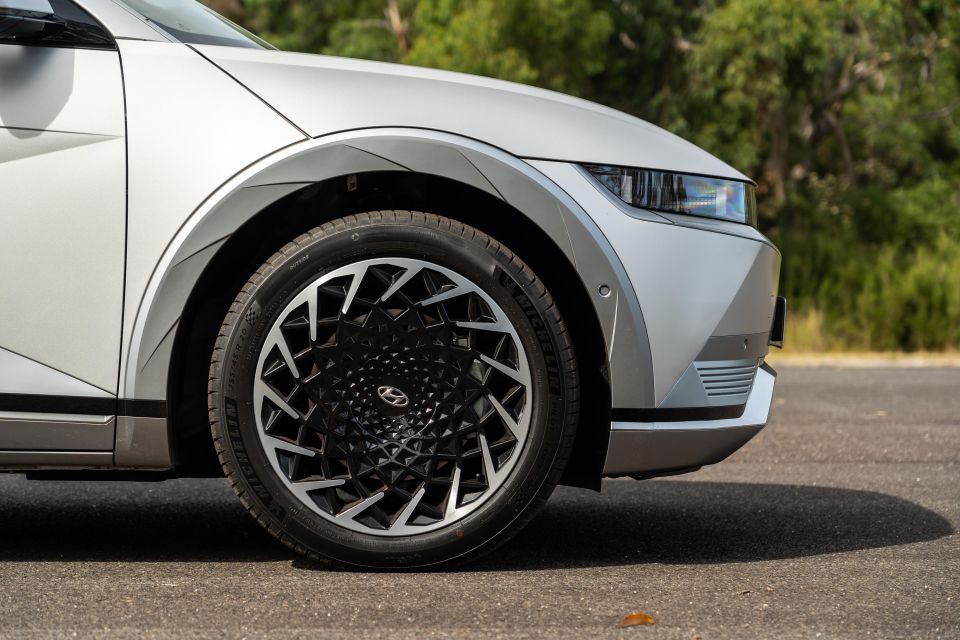

Ioniq 5 Techniq adds:
Ioniq 5 Epiq adds:
The Ioniq 5 has a five-star ANCAP safety rating, which is based on testing conducted in October 2021.
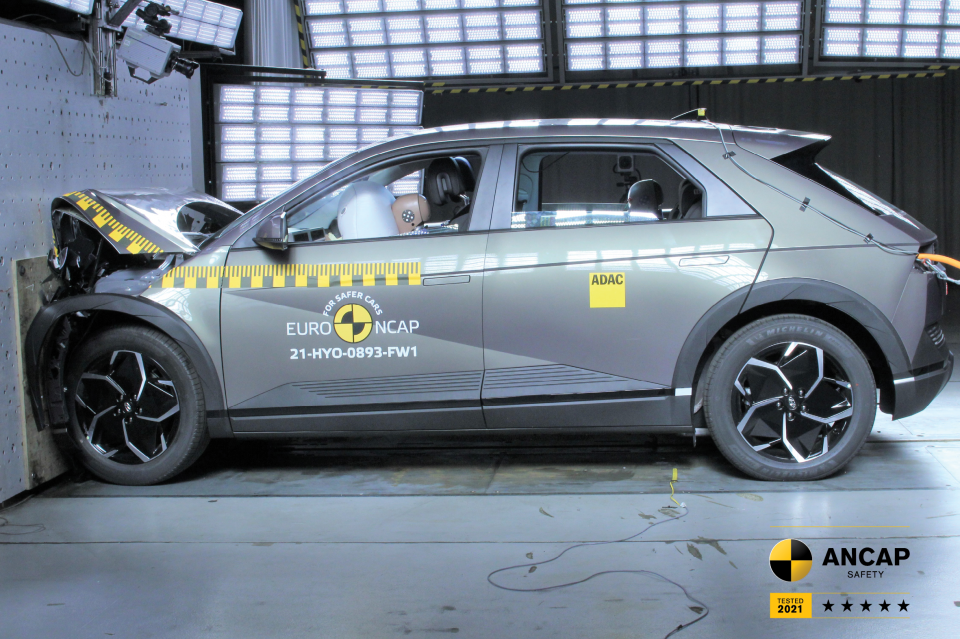
It earned its five-star rating on back of a 88 per cent score for adult occupant protection, 87 per cent for child occupant protection, 63 per cent for vulnerable road user protection, and 89 per cent for safety assist.
Standard safety equipment includes:
The frontal autonomous emergency braking (AEB) feature, which Hyundai calls Forward Collision-Avoidance Assist, includes the following functionality:
The Ioniq 5 is backed by a five-year, unlimited-kilometre vehicle warranty plus an eight-year, 160,000km high-voltage battery warranty.
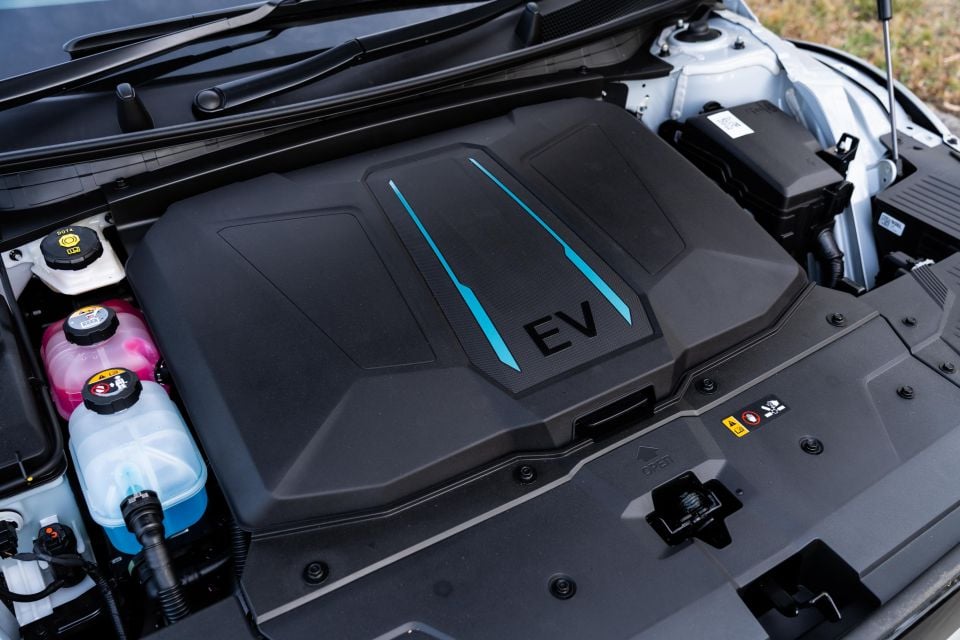
Servicing is required every 24 months or 30,000km, whichever comes first. The first three services are capped at $570, $1090 and $570, respectively.
Those intervals are more spaced out than Hyundai’s combustion-powered vehicles, which require servicing every 12 months or 10-15,000km, whichever comes first.
It’s not quite like a Tesla to service, however, which doesn’t require an annual service but instead requires some items to be replaced at set intervals.
The Ioniq 5 could be a real contender in Australia if Hyundai could get some decent supply.
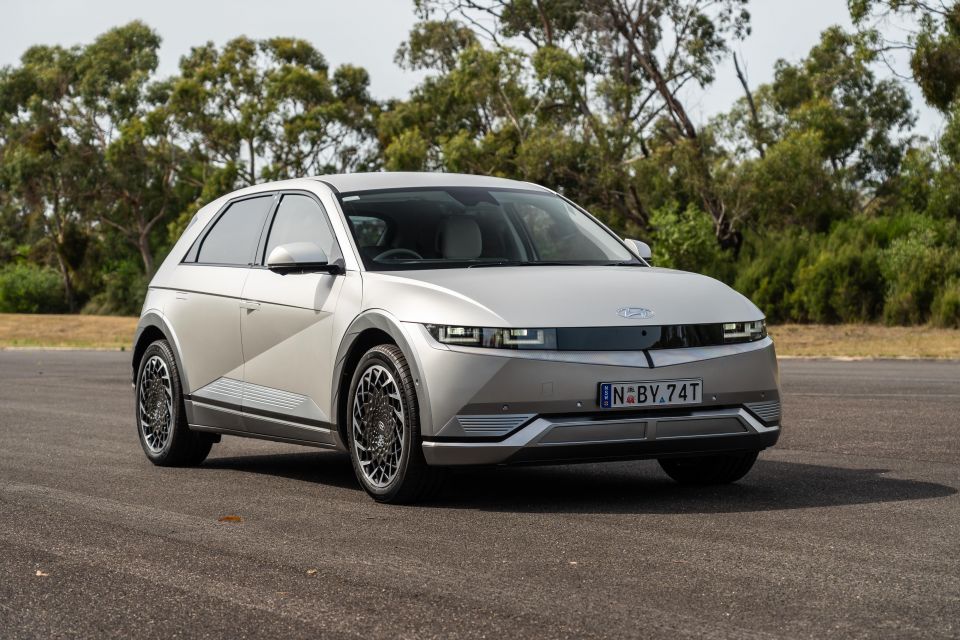
The ride could still do with some fettling, but it’s not disqualifying. We do wish Hyundai’s engineers could chat with their colleagues at Kia, however, as the EV6 remains a better drive.
The Hyundai edges ahead of its cousin in terms of interior space and comfort, and boasts a genuinely clever cabin if not one as commodious as a Tesla Model Y.
The Ioniq 5’s interior is minimalist without being austere like the Tesla’s, while its crisper lines stand in stark contrast with the Model Y’s blobby body.
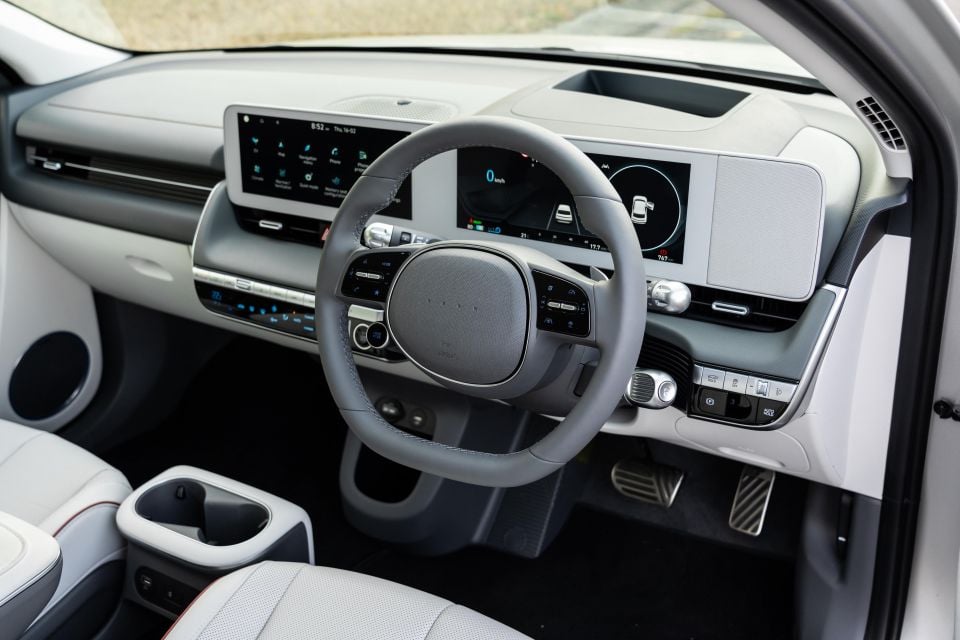
It mightn’t be able to match the Tesla’s entry price point or app connectivity, but you can get a dual-motor all-wheel drive Ioniq 5 for cheaper than Tesla’s option.
There’s a long list of features the Hyundai has that the Tesla doesn’t, too, ranging from rear cross-traffic assist and ventilated front seats to something as simple as an actual instrument cluster.
You can get a Tesla without waiting to log into a website on a specific day to cross your fingers and hope you get an Ioniq 5, and you can get one without much of a wait.
That will be enough for a lot of people, but for those who sign on the dotted line for an Ioniq 5 will get a vehicle that’s distinctively styled inside and out, quick to charge and utterly comfortable.

Click the images for the full gallery
Where expert car reviews meet expert car buying – CarExpert gives you trusted advice, personalised service and real savings on your next new car.
William Stopford is an automotive journalist based in Brisbane, Australia. William is a Business/Journalism graduate from the Queensland University of Technology who loves to travel, briefly lived in the US, and has a particular interest in the American car industry.


Andrew Maclean
29 Days Ago
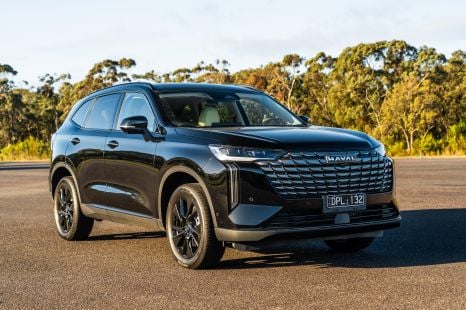

Josh Nevett
26 Days Ago
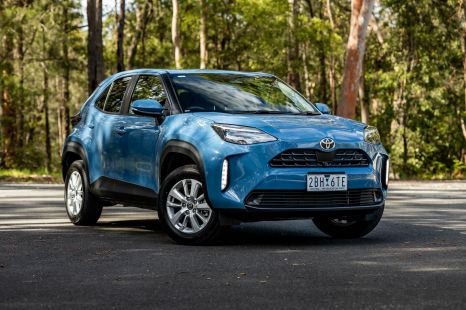

Matt Campbell
19 Days Ago


Damion Smy
12 Days Ago
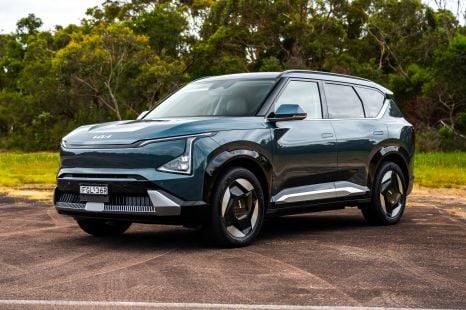

James Wong
12 Days Ago
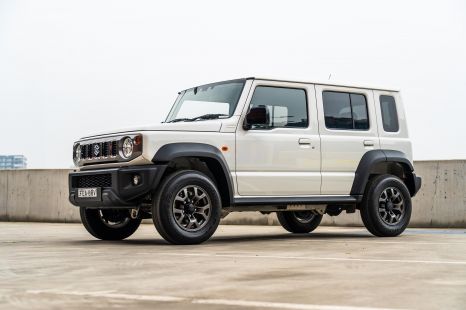

Damion Smy
12 Days Ago